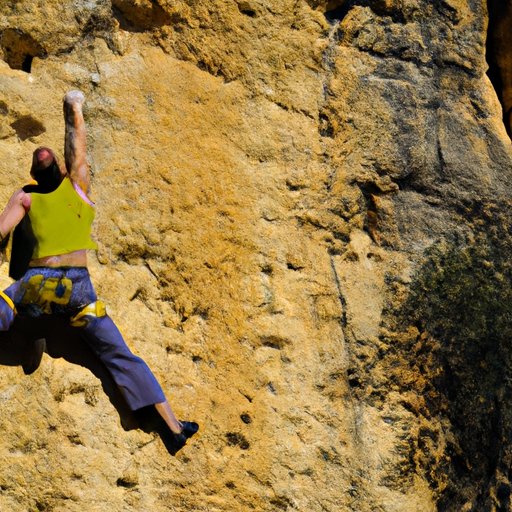
Introduction
Free climbing is a type of climbing that involves ascending vertical terrain without using any equipment that provides physical assistance like ladders or steps, in contrast to aided climbing techniques such as using ropes, crampons or other safety devices. This type of ascent is often done on rocks, ice formations, or mountainsides, and requires significant physical and mental stamina. The concept of free climbing often refers to the challenge of completing an ascent by relying solely on technique and physical exertion. Despite the inherent risks associated with the activity, free climbing continues to grow in popularity among adventure enthusiasts and thrill-seekers.
The History and Origins of Free Climbing
The history of climbing dates back several centuries, with various cultures practicing it in different forms. However, free climbing as we know it gained popularity in the mid-20th century, especially among climbers who were looking for more challenging and authentic ways of climbing. During the early years, free climbing was often considered an extreme approach by the climbing community, as it relied on personal skills and techniques, rather than cutting-edge equipment that was becoming available at the time.
Some of the notable figures who contributed to free climbing’s development include Yvon Chouinard, Royal Robbins, and John Long. They helped develop new techniques and equipment that made free climbing safer and more accessible to climbers of different skill levels. As a result, the sport’s popularity continued to grow, and many new climbers started to take on the challenge of free climbing. Over time, free climbing became one of the most fascinating adventure sports worldwide.
Techniques and Equipment for Free Climbing
The secret to free climbing success lies in mastering the necessary techniques, which include body positioning, balance, and footwork. The equipment used by free climbers has evolved over the years, providing increased safety features and user convenience. Some of the essential gear required for free climbing including ropes, harnesses, and protective equipment. Different types of free climbing techniques such as sport climbing and traditional climbing require different gear and equipment. Regardless of the type of free climbing pursued, safety is always a key concern with every step being a calculated risk.
Famous Free Climbers and Their Achievements
Several notable free climbers have gained widespread recognition for their achievements, both in terms of conquering tough routes and pushing boundaries in the sport. Some of the most famous climbers include names like Alex Honnold, Lynn Hill, Tommy Caldwell, and Chris Sharma, among others. These climbers have set many significant records and achievements in free climbing by ascending some of the most challenging routes or cliffs all over the world. Along with their exceptional accomplishments, their passion and dedication to free climbing played a vital role in promoting the sport’s growth globally.
Ethics and Controversies in Free Climbing
Free climbing is generally considered an eco-friendly and a sustainable adventure sport. However, like any other activity, it has certain unique environmental and cultural aspects that need to be considered by climbers before attempting them. This includes respecting the local flora, fauna, ceremonial sites, and traditions of the places they climb. Areas often face excessive public pressure making it essential for climbers to minimize the human impact on natural habitats. Additionally, there are controversies within the climbing community on the issue of safety regulations and ethical behavior. Debates exist over the purity of methods used, and even over chalk usage.
Tips for Getting Started with Free Climbing
If you are interested in getting started with free climbing, there are some essential steps that you can take to prepare for it. Climbers are strongly encouraged to join a course or find a mentor to learn different aspects of the sport and techniques for reducing the chance of risk. Practicing necessary strength and endurance, selecting appropriate climbing gear, and researching climbing destinations are all significant steps toward building up to free climbing a challenging ascent.
Conclusion
Free climbing is a challenging but rewarding sport that truly requires passion, focus, and dedication. It is a journey spent in nature, which teaches fundamental lessons of resilience, persistence, and resourcefulness. Climbers who are dedicated to perfecting their technique and pushing themselves to new heights will find an immensely satisfying experience in the sport of free climbing. As such, whatever your starting point maybe, ensure you equip yourself with the correct knowledge and skill to ensure you experience a sense of adventure in the safest possible manner.





